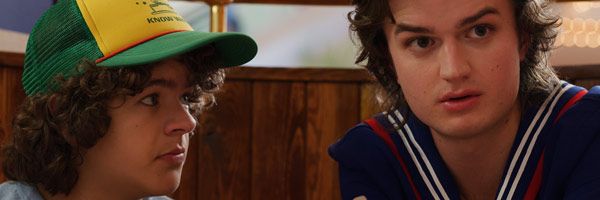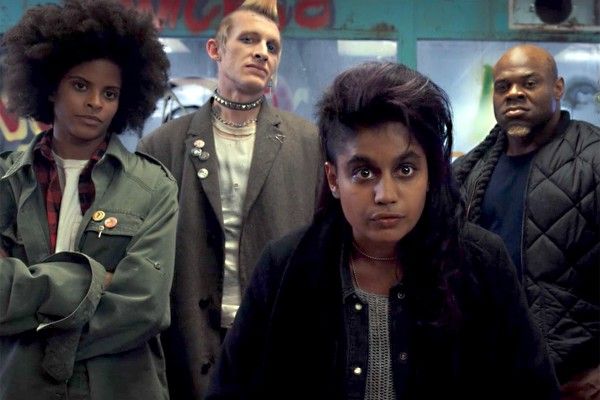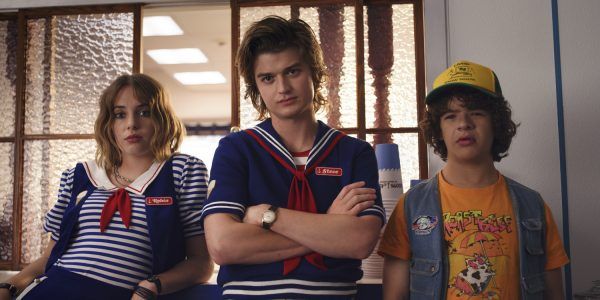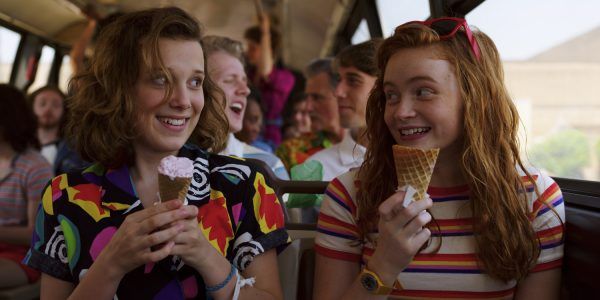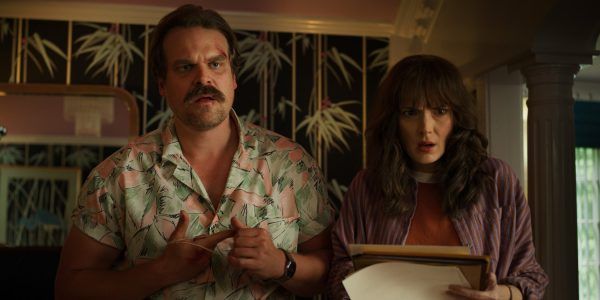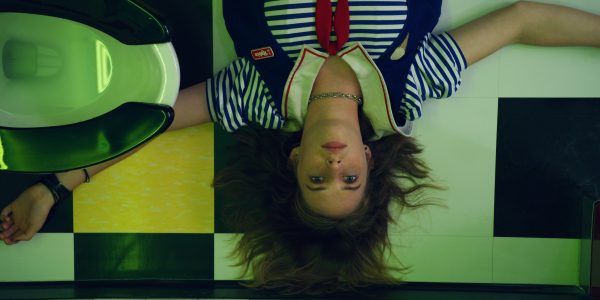When Stranger Things first premiered back in 2016, it came out of nowhere. Even Netflix didn’t seem to realize what they had with this 80s-infused original series, which just kind of appeared and genuinely exploded thanks to good old-fashioned word of mouth. This wasn’t a hit that was predestined by marketing or pushed upon viewers by the streaming service. It succeeded because people found the show, liked it, and recommended it to others.
But Season 1 was made in a vacuum. Creators/showrunners/directors/writers The Duffer Brothers had few credits to their name at the time, and Stranger Things was the first TV series they had ever created from the ground up. This directly fed into the lighting in a bottle that was Season 1, but the show’s success also meant that Stranger Things 2 was crafted with the added pressure of high expectations. In Season 2, the show expanded in different directions and tried new approaches to varying degrees of success. But what makes Stranger Things 3 so satisfying isn’t simply that it’s more of the same, but that it’s clear the Duffer Brothers and executive producer Shawn Levy stopped to consider what did and didn’t work in Season 2, and altered their approach to Season 3 accordingly. The result is the best season of Stranger Things yet.
Ahead of its release, the Duffer Brothers teased Stranger Things 2 as more of a sequel than a second season, likening it to great movie sequels like Aliens and The Empire Strikes Back. In that vein, the show attempted to expand outside Hawkins and reveal a larger world at play, right from the opening scene. Indeed, Stranger Things 2 introduced the storyline thread that there were others just like Eleven (Millie Bobby Brown) out there—more children who had been subjected to experiments, and who as a result now had powers.
The show devoted a whole episode to this subplot, “The Lost Sister,” and it’s largely a failure. While it’s easy to understand why the Duffer Brothers would attempt to expand Stranger Things like this (world building!), it took actually doing the thing to realize what made the show so compelling in the first place. People aren’t watching Stranger Things to learn more about the government conspiracy or scientific experiments, and as evidenced by the go-nowhere plot of “The Lost Sister,” they really don’t want to watch strangers milling about Pittsburgh wrestling with their own powers. No, what makes Stranger Things special is its core cast of characters, their complex relationships, and the small-town constraints of Hawkins.
So that’s exactly what Stranger Things 3 leans into. There’s literally not a single mention of others like Eleven, what happened in Pittsburgh, or the character of “008.” It’s as if “The Lost Sister” never happened, and honestly, that’s for the best. Instead, the show’s third season finds Eleven wrestling not with her powers or Brenner, but with her feelings for Mike (Finn Wolfhard) and her first real female friendship with Max (Sadie Sink). As it turns out, that is far more compelling than watching Eleven travel further down the “experiments” rabbit hole, and it’s the relatability of these characters—how they remind you of your own young love or adolescence—that makes a significant connection with viewers.
But Stranger Things 3 doesn’t just ignore or jettison what went wrong in Stranger Things 2. The Duffer Brothers also show they know how to lean into what works, and ensure that they’re not just giving you “more” but also something substantial. Case in point, one of the breakout relationships from Stranger Things 2 was the friendship between Steve (Joe Keery) and Dustin (Gaten Matarazzo). The easy thing to do here would have been to simply pair Steve and Dustin up once again for yet another adventure the two have to go on together. But in showing a keen understanding of how to give viewers more of what they want but in a new way, the Steve/Dustin relationship returns but with a twist.
When Dustin gets back from summer camp, he finds his friends are too wrapped up in their own lives to pay much attention to him. He reconnects with Steve, and while Steve is clearly happy to hang out with Dustin, he’s also made a new friend of his own: Stranger Things 3 standout, Robin (Maya Hawke). Robin doesn’t play the third wheel in this friendship, nor does she create conflict. Instead, through the Duffer Brothers’ writing and Hawke’s immensely watchable performance, she adds a new dynamic to the Steve/Dustin pairing and serves only to enrich the joy we get out of watching the mismatched duo hang out and trade digs at one another, now with one additional character we really care about.
On top of that, Stranger Things 3 also ups Stranger Things 2 scene-stealer Erica (Priah Ferguson) to series regular status and adds her to the Steve/Dustin/Robin team, adding yet another dynamic to what becomes a quartet in the final episodes of the season. As the four of them venture further down the Starcourt Mall rabbit hole, we get to enjoy how well these characters play off of one another, while also making time for deeply emotional chats like the scene where Robin tells Steve her truth, or where Dustin proves to Erica why she’s a nerd.
Stranger Things 3 isn’t without its faults (that Terminator “homage,” woof), but the season makes crystal clear that the Duffer Brothers and Levy aren’t keen on stubbornly sticking with story points or characters that don’t work, and also know precisely how to capitalize on the aspects of the show that are working. Through the trial and error of Season 2, it all coalesces in Stranger Things 3 as the best and most satisfying season of the show yet.
For more on Stranger Things 3, peruse the links to our recent coverage below:
- 'Stranger Things 3': Is [SPOILER] Really Dead? The Actor Weighs In
- Here Are All the 80s Movies References by ‘Stranger Things’ in Season 3
- ‘Stranger Things 3’: Maya Hawke & The Duffer Brothers on Robin’s “John Hughes” Moment
- ‘Stranger Things 3’: Let’s Talk About That Credits Scene

